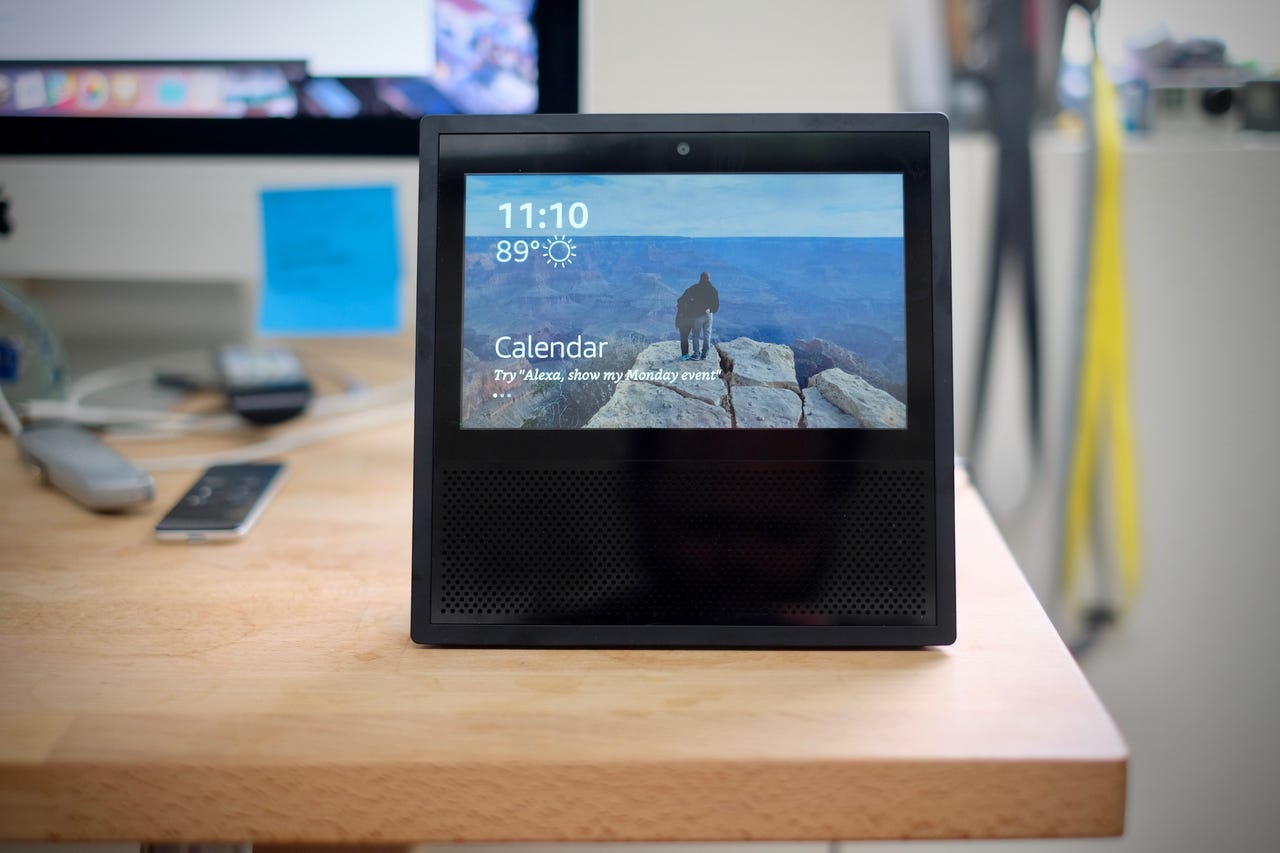Best gifts: Smart speakers for the holidays

Smart Speakers
If you're looking for a really cool gift for someone special, consider a smart speaker. Most of them cost a pretty penny, but after seeing the smile they'll leave on the faces of whoever gets them, you won't be sorry. With a smart speaker, you can do everything from use your voice to get a readout of the daily news or weather or queue up Netflix videos on your TV. Here are the best ones out there.
New 2017 Amazon Echo
First released in 2015 in the US, this $99 always-listening speaker takes a smaller form factor in the 2017 update. The Amazon Echo features a 7-piece mic array, responds to the wake word "Alexa," and is capable of voice interaction. It can even control compatible Internet of Things devices, such as smart thermostats, and music playback from mobile devices over Bluetooth. The Alexa assistant will also help you make to-do lists, set alarms, play songs, read PDFs, provide weather forecasts, and more. It'll play trivia and games with you, too, including Jeopardy. Echo requires a Wi-Fi connection in order for Alexa to work, and it must remain plugged in for power.
Amazon continues to update Echo. In 2017, it added multi-room music, routines, and groups for smart home integration have been a focus of the company.
Echo Dot
The Echo Dot is like a hockey puck-shaped version of Echo and Tap. It plugs into a wall outlet, is always-on, and is designed to be connected to external speakers in order to provide voice feedback. It's a 1.6-inch-tall cylinder with one tiny speaker. It supports always-on Alexa, connects to the cloud to stream tunes, controls your Internet of Things devices, and does all the same stuff as Echo.
The main difference between the $49 Dot and original Echo is that the full-size speaker is gone. The idea is you'll hook Dot up to your own speaker setup, so you can use Alexa -- which, again, requires Wi-Fi -- with your existing audio equipment. Dot is also available to buy in a six-pack or 12-pack configuration.
2017 Echo Plus
Released by Amazon in 2017, the Echo Plus serves as a smart home integration hub starting at $149. It has all the normal Echo features, plus built-in ZigBee smart home hub, which allows for simple and direct setup of compatible ZigBee lights, locks, plugs, and in-wall switches from brands like Philips Hue, GE, and Yale.
Amazon Tap
Released in 2016 in the US, this $129 cylindrical speaker looks a lot like its older sibling, Echo -- only it's mobile (comes with a charging cradle). Tap is 6.2-inches tall and is capable of streaming up to nine hours of audio on a full charge -- or it can last up to three weeks in standby mode. Other than that, it can do all the same tricks as Echo (but, again, you must be connected to Wi-Fi to use Alexa).
Amazon updated the Tap in 2017 with the "Alexa" activation word, like the Echo and Echo Dot.
Echo Spot
In 2017, Amazon introduced the Echo Spot with a 2.5-inch circular screen to use on a nightstand or desk. It can act as a smart alarm clock that can also turn your lights on and off, watch a video flash briefing, show your commute time, get the weather, or show your calendar.
The new Echo Spot is $129.99 and is available for pre-order. It will begin shipping in December.

Echo Show
Also new in 2017, Amazon introduced the Echo Show with a 7-inch LCD screen that can be used to make video calls, playback media, and access other Alexa-enabled features.
Hard to snag: Echo Look
Amazon offered a new take on smart speakers this year with the introduction of the Echo Look. It's an Alexa-enabled device equipped with a depth-sensing camera and LED lighting that will take pictures of your outfit, via voice command, and offer fashion advice through style-trained machine learning algorithms.
Google Home
Home is Google's $129 take on the Amazon Echo. But it's loaded with its very own always-on assistant, which you can activate by saying "OK Google," followed by whatever command you have in mind.
Like Alexa, you can ask Google Assistant basic questions, at which point it'll draw upon Google's 20 years of search experience, or you can use Assistant to control Internet of Things devices with your voice, though the selection of compatible devices is slim at launch (the speaker launched in late 2016). You can also ask it to play YouTube or Netflix videos on your TV, so long as you have a Google Chromecast plugged into said TV.
Google Home Mini
At an October event, Google shrunk its Home into the Google Home Mini.
Four LED lights sit atop the device, designed to indicate when a user is interacting with it, or when the microphone is muted. The top material on Home Mini is touch sensitive for adjusting volume or activating Assistant.
Google Home Mini is priced at $49, compared to $129 for the original, full-sized Google Home speaker. It's available in three different colors: Coral, Chalk, and Charcoal.
Google Home Max
At the same October event, Google also introduced the Home Max to take on the bigger Apple HomePod.
Google Home Max will launch in December in the US, priced at $399. Of course, it comes with Google Assistant.
Alexa on Fire TV
Although Fire TV devices probably don't count as speakers, they do hook up to your TV, which likely emits sound by itself or from your speaker setup, so we're including it. Alexa on these devices can perform specific actions and help you discover all the content available to watch or listen to on your Fire TV box or stick.
Just press and hold the Voice button on your Alexa Voice Remote or the Fire TV Remote app and then say what you want Alexa to do. You can ask for information, search for movies and TV series, play back music, get news and weather, launch apps, etc. Alexa answers directly through your Fire TV, though some features open in a separate display on your TV, allowing you to both see and hear Amazon's voice assistant in action.
Sonos
In 2017, Sonos added Alexa support if you have any Sonos speaker, an Amazon Echo device, and the latest Sonos and Amazon Alexa apps.
Sonos speakers come in different shapes and sizes and prices -- and they all connect to your Wi-Fi network to play music from local or cloud services. They uniquely connect together through a wireless mesh network, allowing the different components to communicate with each other directly. You can listen to tunes on one individually, or you can link them all up to play simultaneously. To control them, simply use the apps for iOS, Android, PC, or Mac.
2018: Apple HomePod
At WWDC in June, Apple announced its take on the smart speaker, dubbed the HomePod. Past Siri integration, the speaker comes with a seven-array, beam-forming tweeter, with directional control, and a bass woofer. HomePod is also powered by an A8 chip.
Apple recently confirmed it won't release the HomePod until 2018.
"We can't wait for people to experience HomePod, Apple's breakthrough wireless speaker for the home, but we need a little more time before it's ready for our customers," an Apple spokesperson told CNET. "We'll start shipping in the US, UK, and Australia in early 2018."
Alexa, Siri and Assistant: Sonos One
With a music focus, Sonos unveiled the Sonos One with an array of six built-in microphones to allow it to respond to voice commands. Available for $199, the One integrates Amazon Alexa support directly. In 2018, Sonos says support for Google Assistant and Apple's Siri (using an iOS device and AirPlay 2) are coming to its products, including the One.